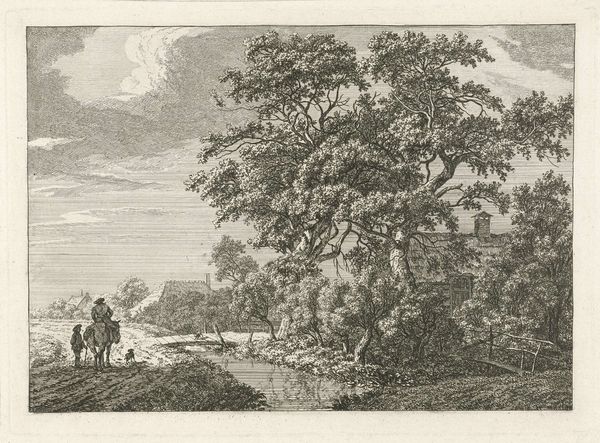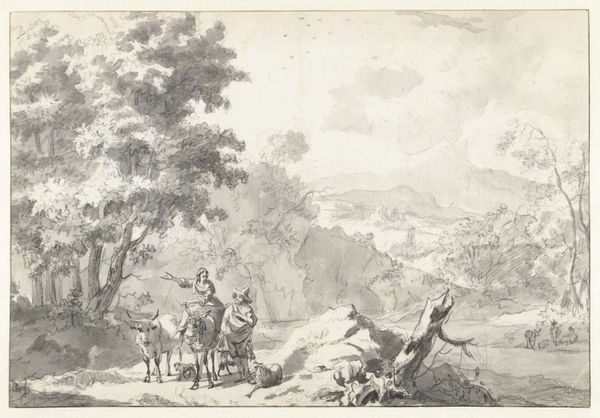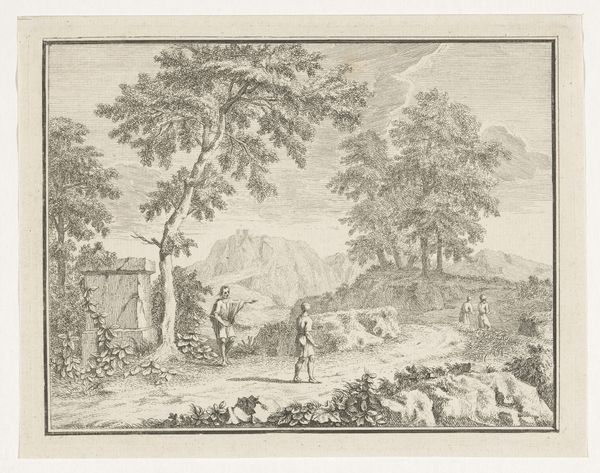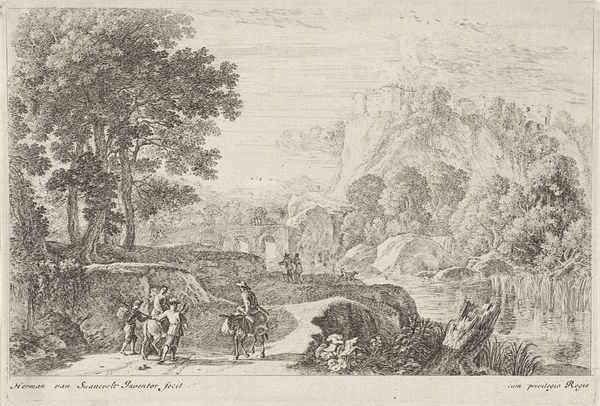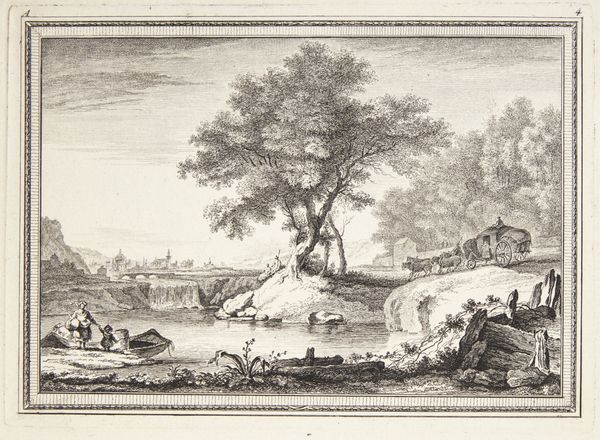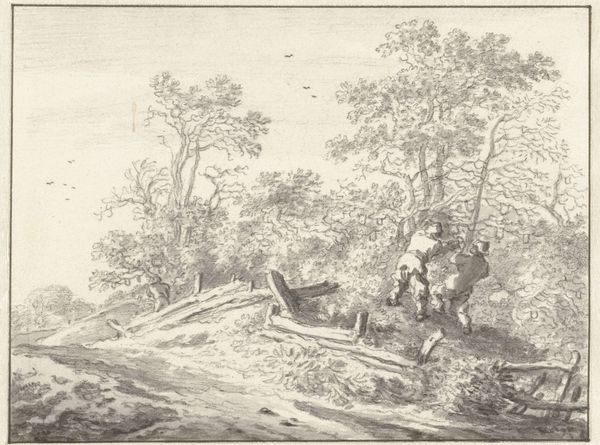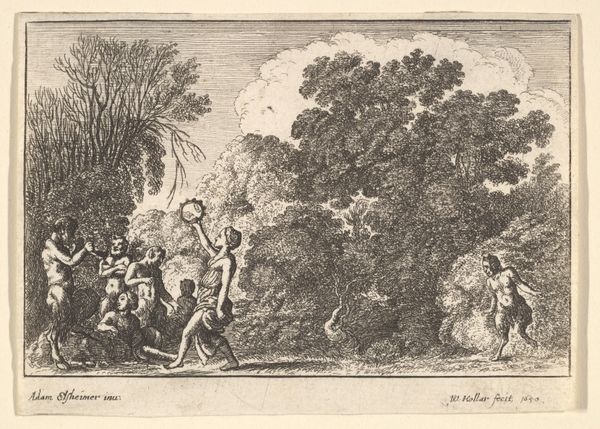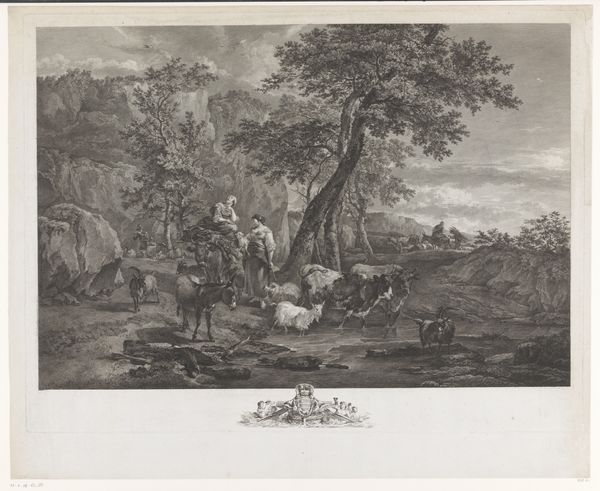
etching, engraving
#
dutch-golden-age
#
etching
#
landscape
#
genre-painting
#
engraving
Dimensions: height 193 mm, width 304 mm
Copyright: Rijks Museum: Open Domain
Editor: This is "Landscape with Hunters and Bird Catchers," an etching by Esaias van de Velde, likely from somewhere between 1609 and 1630. I’m immediately struck by the dramatic contrast of light and shadow, particularly around that massive tree. What key compositional elements draw your attention? Curator: It's precisely that contrast which dictates the formal logic. Observe the strong diagonal established from the lower right with the heavily shaded tree and downwards toward the middleground’s open space, before abruptly ceasing due to the human presence, that directs our gaze. Do you note the graphic structure van de Velde builds through hatching and cross-hatching, primarily independent from the tonal distribution? Editor: You mean how the figures on horseback, though rendered in similar shades to their surroundings, stand out because of the direction of the lines that create them? The direction of the strokes sets them apart? Curator: Precisely! The interplay between light and dark works with that, creating spatial recession. The density of lines suggests depth. Furthermore, note how the eye is led, via a repoussoir effect from the prominent tree on the right side into the expansive centre. Consider, if the repoussoir element was excluded, how it would disrupt our interpretation and flatten the work? Editor: So, removing the tree flattens the depth that is enhanced through lines and hatching. Curator: Correct. Without it, the gaze does not fall towards a central point, a perspectival element for directing our interpretation. Van de Velde controls the lines; we read what is on them. Editor: I never thought about it like that. It really underscores how meticulously constructed the whole scene is. Curator: Indeed. Focusing on this deliberate visual vocabulary reveals so much of the artist’s intention.
Comments
No comments
Be the first to comment and join the conversation on the ultimate creative platform.
